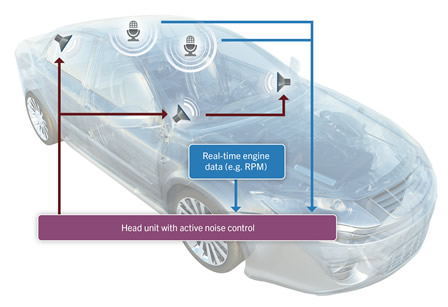Noise cancellation has become commonplace in modern cars, especially hybrids and vehicles with internal combustion engines that utilize unconventional firing sequences, but Hyundai is looking to tackle yet another form of unwanted noise: the type that comes from outside.
Preventing the intrusion of road and wind noise into the cabin has been a priority for automakers ever since the first fixed-roof car rolled off the assembly line. It touches on every aspect of vehicle engineering, from the fundamental design of the chassis to the fitment of the smallest pieces of interior trim and everything in between.
In the past two decades, technology used exclusively in high-end luxury cars has begun to trickle down to the mainstream; acoustic glass and sound-proofing materials are now used even in value-oriented models. Exterior noise cancellation, however, remains an expensive and complex undertaking, requiring a great deal of processing power and environmental control.

QNX software-based Active Noise Control.
A reliable noise-cancellation system could be big news for EVs or hybrids being driven in electric-only mode—anything which lacks the noise of an ICE, which can drown out unwanted exterior frequencies. Powertrain engineers have long relied on the engine itself to produce certain frequencies that cancel out unwanted noise, deliberately allowing them to be transmitted into the cabin.
Hyundai is looking to change that with what it describes as the world's first truly active noise cancellation system aimed squarely at unwanted road- and wind-related frequencies. Hyundai calls it Road Noise Active Noise Control (RANC) system, and says its effects are dramatic—capable of reducing in-cabin noise by as much as three decibels.
Its system can handle anything from the hiss of tires to the intrusive thump of rumble stripes, Hyundai says, and can be calibrated to reduce noise at multiple seating positions.
This opens up two avenues for Hyundai. At the higher end, premium, luxury-oriented cars can be made even quieter than they already are; at the mainstream level, Hyundai can build cars that are just as quiet while reducing the unsprung mass being contributed by noise-isolating material and dampers.












